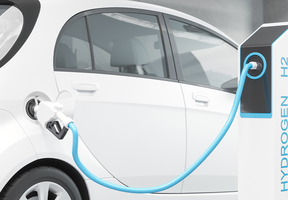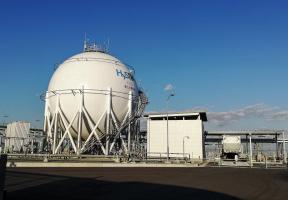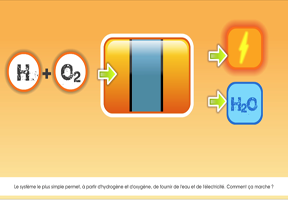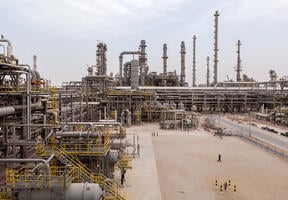The Many Uses of Hydrogen
10 min read
Today, is almost exclusively used for industrial purposes in chemicals and refining. In the future, it could play a major role as an in transportation, the gas industry, and and generation.

© AFP PHOTO / FEDOUACH MEHDI - Hydrogen is already used to power commercial and utility vehicles that stay within a limited driving range.
More than 80% of the hydrogen produced today is used to make ammonia, a crucial ingredient in fertilizer, and to remove sulfur from in oil refining. The remainder is used for other chemical processes, for certain glassmaking processes and in the production of plastics and printed circuit boards. Nearly 60 million metric tons of hydrogen are produced each year worldwide, of which 900,000 metric tons in France.
Only one percent is used as an energy carrier, to launch satellites and rockets in the space industry.
Although industrial uses should continue to dominate the picture for many years, there are numerous outlets for using hydrogen’s energy-carrier capabilities. If they come to fruition, global production of hydrogen would have to increase considerably. Examples include:
Renewable Energy Storage
Solar and wind , which are taking off worldwide, have the drawback of being intermittent and sometimes producing more electricity than the grid can handle. Using this surplus electricity to produce hydrogen, which could be reconverted into electricity via a , would be a solution for storing and smoothing production. To give an example, the MYRTE1 platform in Corsica comprises a grid-connected photovoltaic power plant and an electrolyzer that converts electricity into hydrogen during periods of low demand. This energy is re-injected into the grid via a fuel cell during peak consumption periods, notably at night when the solar panels are no longer generating power. Hydrogen therefore serves as a buffer here, improving the grid’s stability. The compact, integrated systems handle decentralized, stand-alone operations, where hydrogen transport is not necessary. Another project known as PUSHY is testing the same processes with micro-hydro plants.
Power Generation
A hydrogen fuel cell generates electricity and gives off heat and water.
Fuel cells can be adapted for use in equipment of all sizes, and not only electric vehicles.
Examples include:
- Small nomadic devices, such as mobile phones and computers. A hydrogen bicycle prototype has even been tested.
- Large vehicles that do not have to travel long distances and for which space is not a problem, such as tractors and utility equipment in captive fleets. Hydrogen is already used on a regular basis to power lift trucks; some 3,000 are in operation in the United States, and retailer Ikea has launched a hydrogen program in France.
- Stationary installations, including niche stations designed to serve isolated sites such as relay antennas or telecommunication centers, backup generators for IT servers or hospitals, and larger stations for industrial units.
Stationary Fuel Cells
Stationary fuel cells are rapidly gaining popularity as a power source in homes, buildings and stores. Hydrogen is produced directly on site from the municipal natural gas supply by way of a machine connected to the fuel cell which, together, are no larger than a wardrobe. The system supplies electricity as well as heat that can be recovered to heat the premises. Japan leads in this area, with more than 100,000 units installed in 2016. If hydrogen cars become more widespread, one day hydrogen from their tank could be used to power the systems. Germany has initiated programs that follow in Japan’s footsteps.
Such highly localized electricity generation could serve to mitigate failures in the power grid, offering useful protection to countries like Japan, where earthquakes and typhoons are common. The widespread development of stationary solutions could also facilitate industrial-scale manufacture of fuel cells and reduce their production cost, which could help expand their use in the automotive industry.
Power to Gas
Hydrogen can be injected into the natural gas grid in concentrations of 5 to 10% for conventional use in housing or industry. This hydrogen-enhanced natural gas can also be used as a fuel (like Hythane®) for bus fleets. A pilot project known as GRHYD2 is currently under way in Dunkirk, France to study these two uses.
Methanation
Hydrogen can be combined with carbon dioxide to create methane, or natural gas. Known as , this process could reduce CO2 emissions from facilities such as plants, provided that the hydrogen is produced from clean electricity generated using renewables or . The methane can be transformed into various fuels, including and kerosene. However, the price per metric ton of CO2 would have to increase sharply for the process to be economically viable. Combined with water and CO2, hydrogen can also be used to produce alkanes, or saturated hydrocarbons that are also known as electrofuels. It’s the future of the future!
Sources :
- MYRTE project (in French only)
- The GRHYD project (in French only)




















